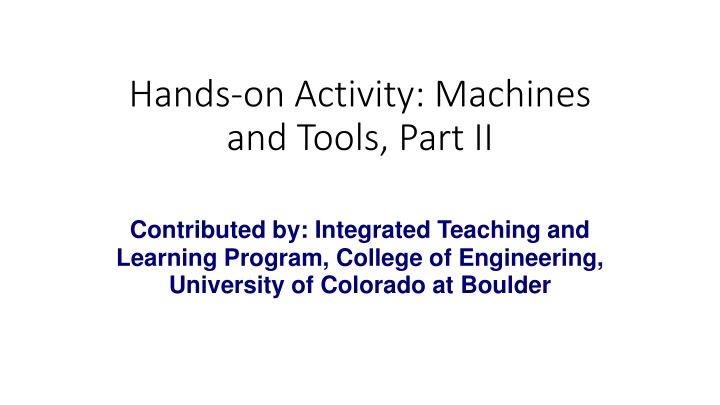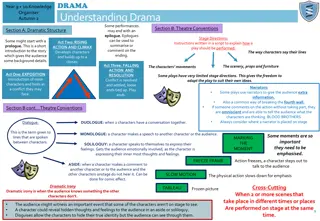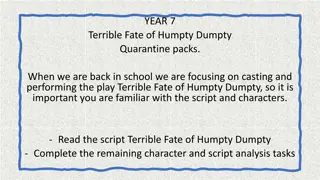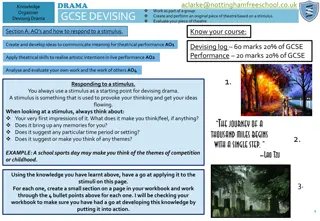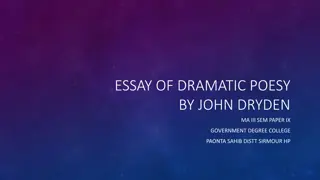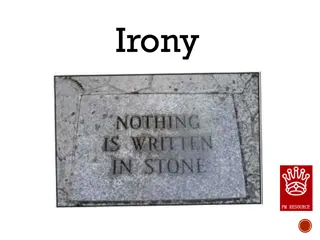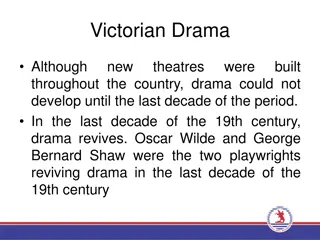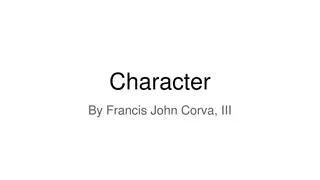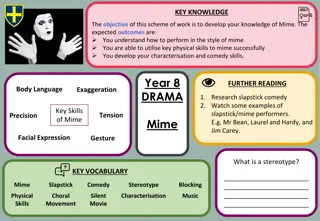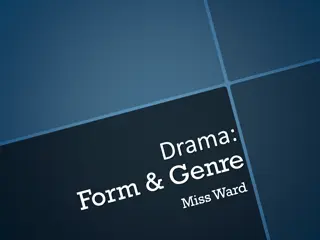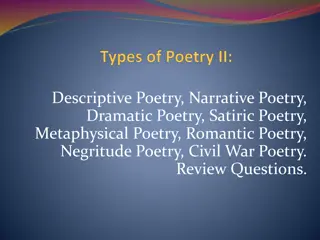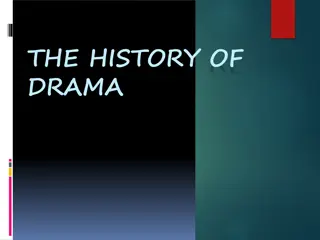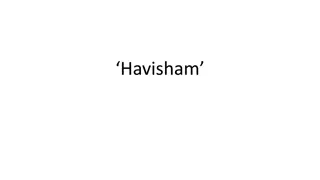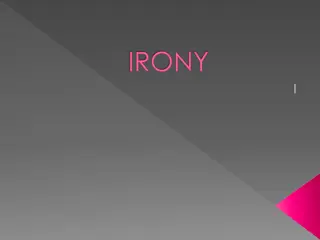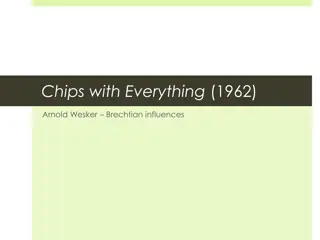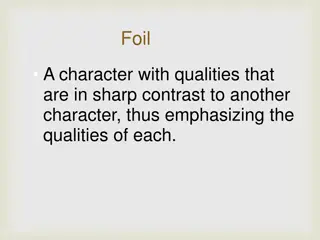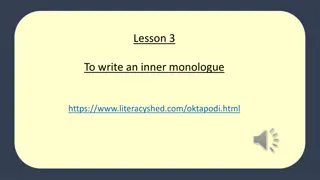Dramatic Monologues
Dramatic monologue is a poetic form with theatrical qualities, where a solitary speaker conveys a specific viewpoint to an audience, often revealing complex character traits. Poets like Duffy create personas to narrate uninterrupted narratives, such as Miss Havisham's character from Dickens' novel "Great Expectations." Explore the interplay between speaker and audience, unveiling hidden truths and diverse perspectives in these intriguing monologues.
Download Presentation

Please find below an Image/Link to download the presentation.
The content on the website is provided AS IS for your information and personal use only. It may not be sold, licensed, or shared on other websites without obtaining consent from the author.If you encounter any issues during the download, it is possible that the publisher has removed the file from their server.
You are allowed to download the files provided on this website for personal or commercial use, subject to the condition that they are used lawfully. All files are the property of their respective owners.
The content on the website is provided AS IS for your information and personal use only. It may not be sold, licensed, or shared on other websites without obtaining consent from the author.
E N D
Presentation Transcript
Hands-on Activity: Machines and Tools, Part II Contributed by: Integrated Teaching and Learning Program, College of Engineering, University of Colorado at Boulder
Summary Summary In this activity, students gain first-hand experience with the mechanical advantage of pulleys. Students are given the challenge of helping save a whale by moving it from an aquarium back to its natural habitat into the ocean. They set up different pulley systems, compare the theoretical and actual mechanical advantage of each and discuss their recommendations as a class.
Learning Objectives Learning Objectives After this activity, students should be able to: Calculate the mechanical advantage of a pulley. Explain why the concept of mechanical advantage is useful for engineers. Perform engineering design work in a group
Materials List Materials List Approximately 20 feet of nylon rope Two-wheeled pulley Single pulley Spring scale String Weight (200g, 500g, 1kg) 4 copies of the Pulley Worksheet
Introduction Introduction What are some examples of tools? (Answer: There are many different kinds of tools: hand tools, power tools, big tools, small tools, tools with specific uses, tools with many uses, and so on.)
Pulleys/MA We will attach the pulleys to the ceiling cross members using pipe cleaners.
What is the purpose of a pulley? Vertical Lifting. How do you measure a pulleys effectiveness? (Answer: We would calculate the mechanical advantage.)
Pre Pre- -Activity Assessment Activity Assessment How many devices can you think of that contain pulleys? (Some examples include: assembly lines, cranes, construction sites and other places where heavy objects need to be moved.)
Procedure Procedure Stand on tables to hang the two-wheeled pulley on the ceiling, as shown in Figure 3.
Follow the instructions on the Pulley Worksheet for measuring the weight (load) of the object, effort and mechanical advantage of several pulley systems.
Safety Issues Safety Issues Be careful when standing on tables. If you would rather stand on a desk or not stand on anything please use your best judgment. If you need help attaching the pulley to the ceiling please raise your hand and ask for help.
Post Post- -Activity Assessment Activity Assessment Are the theoretical and actual mechanical advantages similar for each pulley system? Make a list of the problems, design requirements, and constraints. (Examples: budget for materials, time, safety and impact on the whale, ethical and social impacts.)
